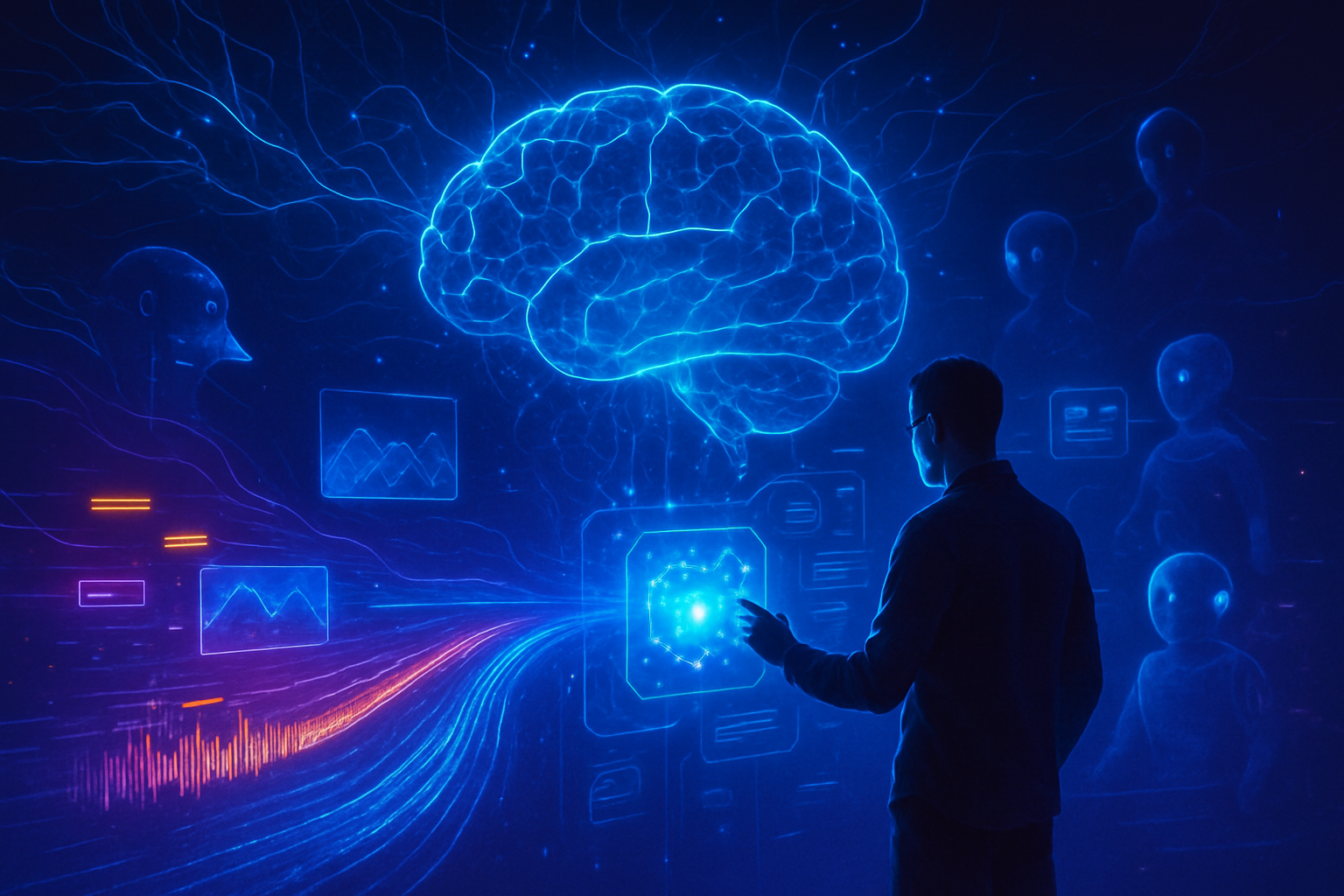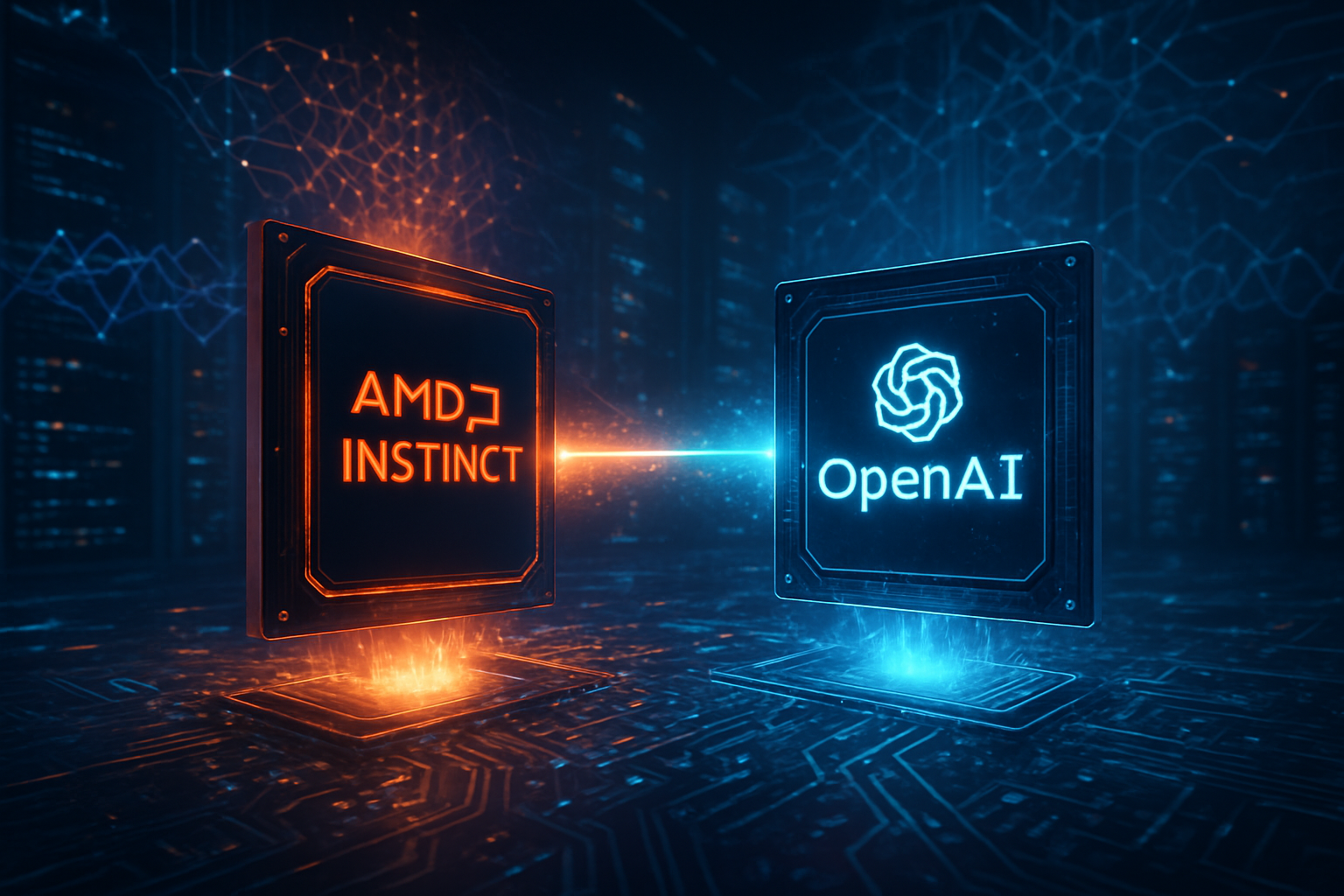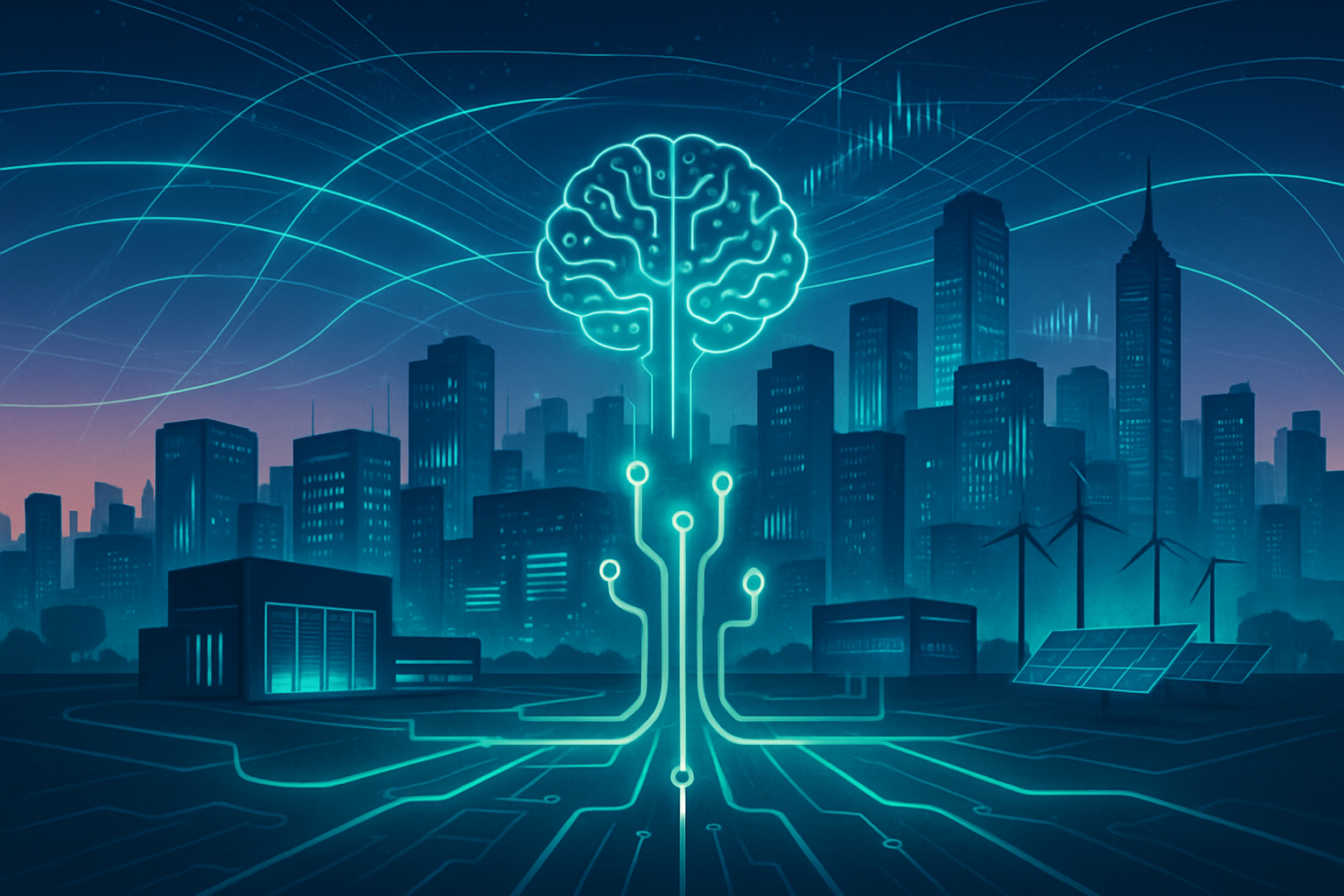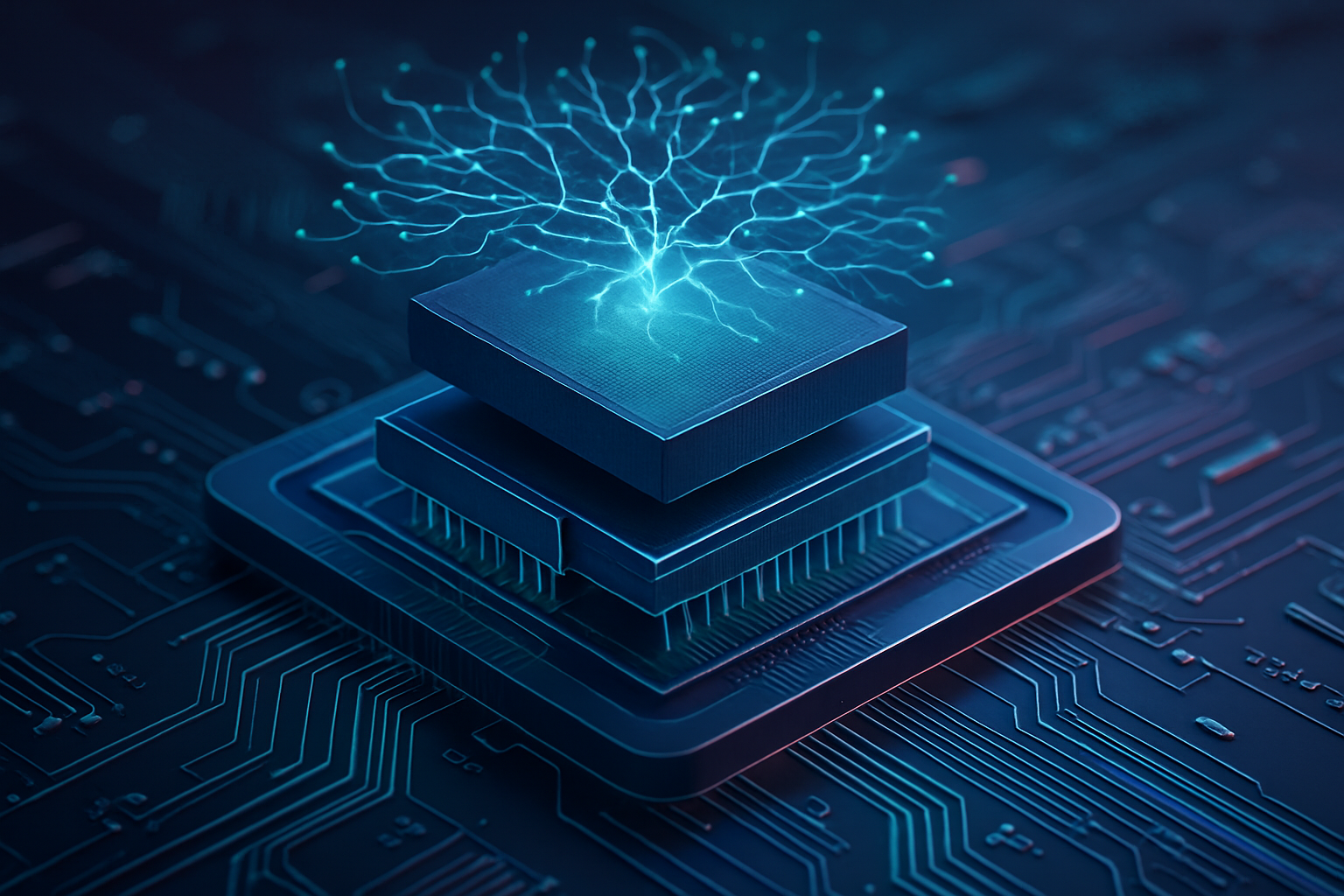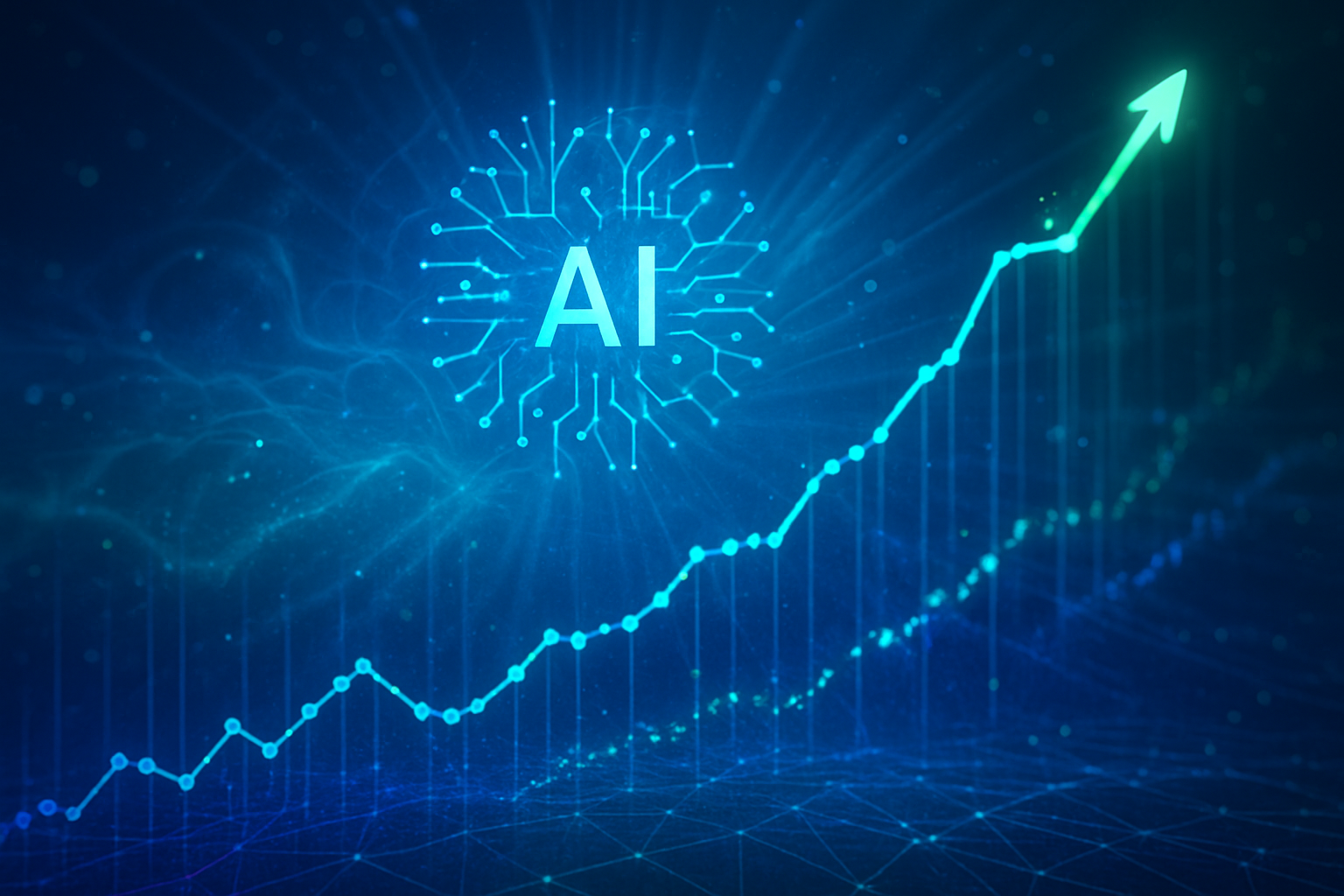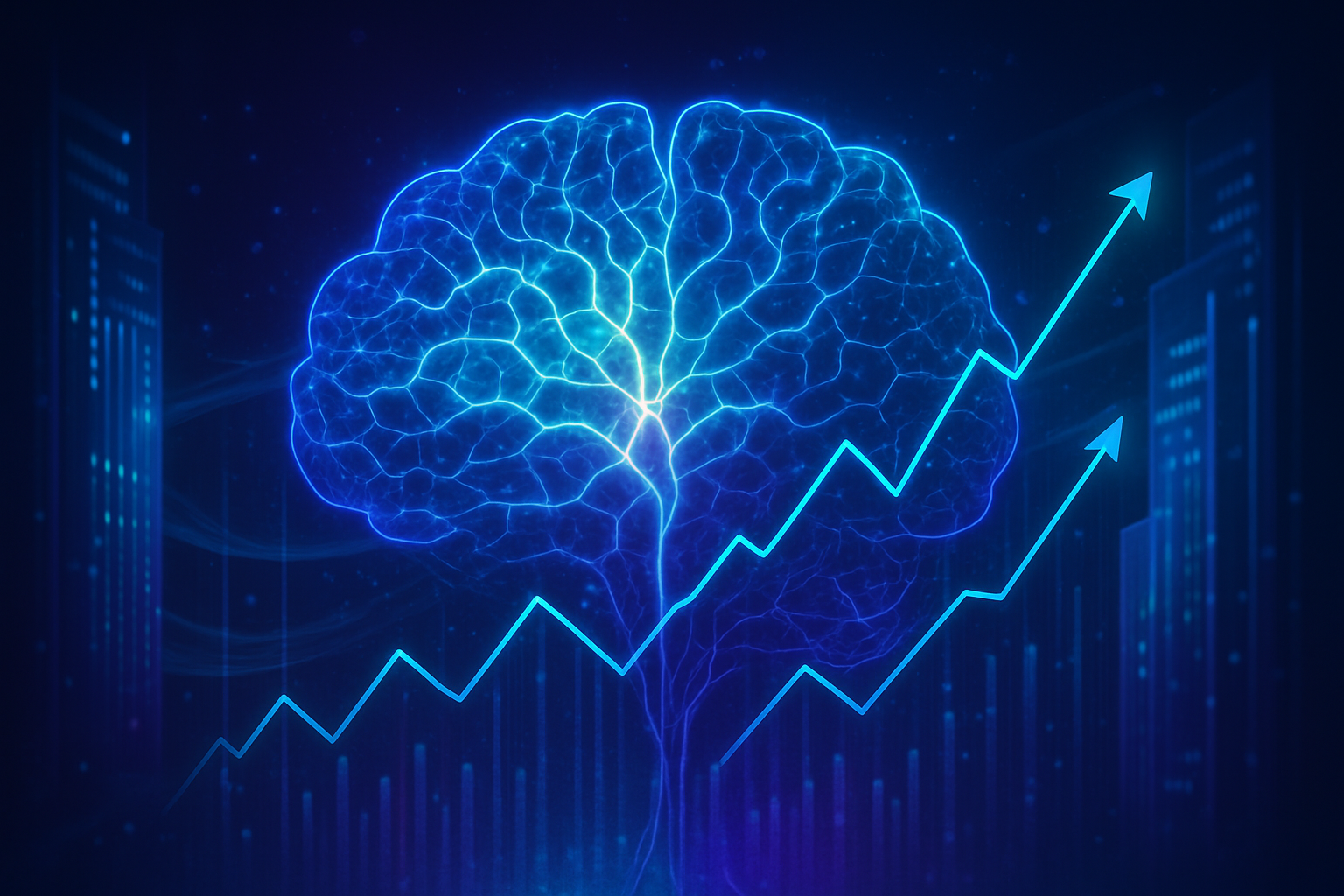San Mateo, CA – October 4, 2025 – Snowflake (NYSE: SNOW), the cloud data warehousing giant, has recently captivated the market with a remarkable 49% surge in its stock performance, a testament to the escalating investor confidence in its groundbreaking artificial intelligence initiatives. This significant uptick, which saw the company's shares climb 46% year-to-date and an impressive 101.86% over the preceding 52 weeks as of early September 2025, was notably punctuated by a 20% jump in late August following robust second-quarter fiscal 2026 results that surpassed Wall Street expectations. The financial prowess is largely attributed to the increasing demand for AI solutions and a rapid expansion of customer adoption for Snowflake's innovative AI products, with over 6,100 accounts reportedly engaging with these offerings weekly.
At the core of this market enthusiasm lies Snowflake's strategic pivot and substantial investment in AI services, particularly those empowering users to query complex datasets using intuitive AI agents. These new capabilities, encapsulated within the Snowflake Data Cloud, are democratizing access to enterprise-grade AI, allowing businesses to derive insights from their data with unprecedented ease and speed. The immediate significance of these developments is profound: they not only reinforce Snowflake's position as a leader in the data cloud market but also fundamentally transform how organizations interact with their data, promising enhanced security, accelerated AI adoption, and a significant reduction in the technical barriers to advanced data analysis.
The Technical Revolution: Snowflake's AI Agents Unpack Data's Potential
Snowflake's recent advancements are anchored in its comprehensive AI platform, Snowflake Cortex AI, a fully managed service seamlessly integrated within the Snowflake Data Cloud. This platform empowers users with direct access to leading large language models (LLMs) like Snowflake Arctic, Meta Llama, Mistral, and OpenAI's GPT models, along with a robust suite of AI and machine learning capabilities. The fundamental innovation lies in its "AI next to your data" philosophy, allowing organizations to build and deploy sophisticated AI applications directly on their governed data without the security risks and latency associated with data movement.
The technical brilliance of Snowflake's offering is best exemplified by its core services designed for AI-driven data querying. Snowflake Intelligence provides a conversational AI experience, enabling business users to interact with enterprise data using natural language. It functions as an agentic system, where AI models connect to semantic views, semantic models, and Cortex Search services to answer questions, provide insights, and generate visualizations across structured and unstructured data. This represents a significant departure from traditional data querying, which typically demands specialized SQL expertise or complex dashboard configurations.
Central to this natural language interaction is Cortex Analyst, an LLM-powered feature that allows business users to pose questions about structured data in plain English and receive direct answers. It achieves remarkable accuracy (over 90% SQL accuracy reported on real-world use cases) by leveraging semantic models. These models are crucial, as they capture and provide the contextual business information that LLMs need to accurately interpret user questions and generate precise SQL. Unlike generic text-to-SQL solutions that often falter with complex schemas or domain-specific terminology, Cortex Analyst's semantic understanding bridges the gap between business language and underlying database structures, ensuring trustworthy insights.
Furthermore, Cortex AISQL integrates powerful AI capabilities directly into Snowflake's SQL engine. This framework introduces native SQL functions like AI_FILTER, AI_CLASSIFY, AI_AGG, and AI_EMBED, allowing analysts to perform advanced AI operations—such as multi-label classification, contextual analysis with RAG, and vector similarity search—using familiar SQL syntax. A standout feature is its native support for a FILE data type, enabling multimodal data analysis (including blobs, images, and audio streams) directly within structured tables, a capability rarely found in conventional SQL environments. The in-database inference and adaptive LLM optimization within Cortex AISQL not only streamline AI workflows but also promise significant cost savings and performance improvements.
The orchestration of these capabilities is handled by Cortex Agents, a fully managed service designed to automate complex data workflows. When a user poses a natural language request, Cortex Agents employ LLM-based orchestration to plan a solution. This involves breaking down queries, intelligently selecting tools (Cortex Analyst for structured data, Cortex Search for unstructured data, or custom tools), and iteratively refining the approach. These agents maintain conversational context through "threads" and operate within Snowflake's robust security framework, ensuring all interactions respect existing role-based access controls (RBAC) and data masking policies. This agentic paradigm, which mimics human problem-solving, is a profound shift from previous approaches, automating multi-step processes that would traditionally require extensive manual intervention or bespoke software engineering.
Initial reactions from the AI research community and industry experts have been overwhelmingly positive. They highlight the democratization of AI, making advanced analytics accessible to a broader audience without deep ML expertise. The emphasis on accuracy, especially Cortex Analyst's reported 90%+ SQL accuracy, is seen as a critical factor for enterprise adoption, mitigating the risks of AI hallucinations. Experts also praise the enterprise-grade security and governance inherent in Snowflake's platform, which is vital for regulated industries. While early feedback pointed to some missing features like Query Tracing and LLM Agent customization, and a "hefty price tag," the overall sentiment positions Snowflake Cortex AI as a transformative force for enterprise AI, fundamentally altering how businesses leverage their data for intelligence and innovation.
Competitive Ripples: Reshaping the AI and Data Landscape
Snowflake's aggressive foray into AI, particularly with its sophisticated AI agents for data querying, is sending significant ripples across the competitive landscape, impacting established tech giants, specialized AI labs, and agile startups alike. The company's strategy of bringing AI models directly to enterprise data within its secure Data Cloud is not merely an enhancement but a fundamental redefinition of how businesses interact with their analytical infrastructure.
The primary beneficiaries of Snowflake's AI advancements are undoubtedly its own customers—enterprises across diverse sectors such as financial services, healthcare, and retail. These organizations can now leverage their vast datasets for AI-driven insights without the cumbersome and risky process of data movement, thereby simplifying complex workflows and accelerating their time to value. Furthermore, startups building on the Snowflake platform, often supported by initiatives like "Snowflake for Startups," are gaining a robust foundation to scale enterprise-grade AI applications. Partners integrating with Snowflake's Model Context Protocol (MCP) Server, including prominent names like Anthropic, CrewAI, Cursor, and Salesforce's Agentforce, stand to benefit immensely by securely accessing proprietary and third-party data within Snowflake to build context-rich AI agents. For individual data analysts, business users, developers, and data scientists, the democratized access to advanced analytics via natural language interfaces and streamlined workflows represents a significant boon, freeing them from repetitive, low-value tasks.
However, the competitive implications for other players are multifaceted. Cloud providers such as Amazon (NASDAQ: AMZN) with AWS, Alphabet (NASDAQ: GOOGL) with Google Cloud, and Microsoft (NASDAQ: MSFT) with Azure, find themselves in direct competition with Snowflake's data warehousing and AI services. While Snowflake's multi-cloud flexibility allows it to operate across these infrastructures, it simultaneously aims to capture AI workloads that might otherwise remain siloed within a single cloud provider's ecosystem. Snowflake Cortex, offering access to various LLMs, including its own Arctic LLM, provides an alternative to the AI model offerings from these tech giants, presenting customers with greater choice and potentially shifting allegiances.
Major AI labs like OpenAI and Anthropic face both competition and collaboration opportunities. Snowflake's Arctic LLM, positioned as a cost-effective, open-source alternative, directly competes with proprietary models in enterprise intelligence metrics, including SQL generation and coding, often proving more efficient than models like Llama3 and DBRX. Cortex Analyst, with its reported superior accuracy in SQL generation, also challenges the performance of general-purpose LLMs like GPT-4o in specific enterprise contexts. Yet, Snowflake also fosters collaboration, integrating models like Anthropic's Claude 3.5 Sonnet within its Cortex platform, offering customers a diverse array of advanced AI capabilities. The most direct rivalry, however, is with data and analytics platform providers like Databricks, as both companies are fiercely competing to become the foundational layer for enterprise AI, each developing their own LLMs (Snowflake Arctic versus Databricks DBRX) and emphasizing data and AI governance.
Snowflake's AI agents are poised to disrupt several existing products and services. Traditional Business Intelligence (BI) tools, which often rely on manual SQL queries and static dashboards, face obsolescence as natural language querying and automated insights become the norm. The need for complex, bespoke data integration and orchestration tools may also diminish with the introduction of Snowflake Openflow, which streamlines integration workflows within its ecosystem, and the MCP Server, which standardizes AI agent connections to enterprise data. Furthermore, the availability of Snowflake's cost-effective, open-source Arctic LLM could shift demand away from purely proprietary LLM providers, particularly for enterprises prioritizing customization and lower total cost of ownership.
Snowflake's market positioning is strategically advantageous, centered on its identity as an "AI-first Data Cloud." Its ability to allow AI models to operate directly on data within its environment ensures robust data governance, security, and compliance, a critical differentiator for heavily regulated industries. The company's multi-cloud agnosticism prevents vendor lock-in, offering enterprises unparalleled flexibility. Moreover, the emphasis on ease of use and accessibility through features like Cortex AISQL, Snowflake Intelligence, and Cortex Agents lowers the barrier to AI adoption, enabling a broader spectrum of users to leverage AI. Coupled with the cost-effectiveness and efficiency of its Arctic LLM and Adaptive Compute, and a robust ecosystem of over 12,000 partners, Snowflake is cementing its role as a provider of enterprise-grade AI solutions that prioritize reliability, accuracy, and scalability.
The Broader AI Canvas: Impacts and Concerns
Snowflake's strategic evolution into an "AI Data Cloud" represents a pivotal moment in the broader artificial intelligence landscape, aligning with and accelerating several key industry trends. This shift signifies a comprehensive move beyond traditional cloud data warehousing to a unified platform encompassing AI, generative AI (GenAI), natural language processing (NLP), machine learning (ML), and MLOps. At its core, Snowflake's approach champions the "democratization of AI" and "data-centric AI," advocating for bringing AI models directly to enterprise data rather than the conventional, riskier practice of moving data to models.
This strategy positions Snowflake as a central hub for AI innovation, integrating seamlessly with leading LLMs from partners like OpenAI, Anthropic, and Meta, alongside its own high-performing Arctic LLM. Offerings such as Snowflake Cortex AI, with its conversational data agents and natural language analytics, and Snowflake ML, which provides tools for building, training, and deploying custom models, underscore this commitment. Furthermore, Snowpark ML and Snowpark Container Services empower developers to run sophisticated applications and LLMOps tooling entirely within Snowflake's secure environment, streamlining the entire AI lifecycle from development to deployment. This unified platform approach tackles the inherent complexities of modern data ecosystems, offering a single source of truth and intelligence.
The impacts of Snowflake's AI services are far-reaching. They are poised to drive significant business transformation by enabling organizations to convert raw data into actionable insights securely and at scale, fostering innovation, efficiency, and a distinct competitive advantage. Operational efficiency and cost savings are realized through the elimination of complex data transfers and external infrastructure, streamlining processes, and accelerating predictive analytics. The integrated MLOps and out-of-the-box GenAI features promise accelerated innovation and time to value, ensuring businesses can achieve faster returns on their AI investments. Crucially, the democratization of insights empowers business users to interact with data and generate intelligence without constant reliance on specialized data science teams, cultivating a truly data-driven culture. Above all, Snowflake's emphasis on enhanced security and governance, by keeping data within its secure boundary, addresses a critical concern for enterprises handling sensitive information, ensuring compliance and trust.
However, this transformative shift is not without its potential concerns. While Snowflake prioritizes security, analyses have highlighted specific data security and governance risks. Services like Cortex Search, if misconfigured, could inadvertently expose sensitive data to unauthorized internal users by running with elevated privileges, potentially bypassing traditional access controls and masking policies. Meticulous configuration of service roles and judicious indexing of data are paramount to mitigate these risks. Cost management also remains a challenge; the adoption of GenAI solutions often entails significant investments in infrastructure like GPUs, and cloud data spend can be difficult to forecast due to fluctuating data volumes and usage. Furthermore, despite Snowflake's efforts to democratize AI, organizations continue to grapple with a lack of technical expertise and skill gaps, hindering the full adoption of advanced AI strategies. Maintaining data quality and integration across diverse environments also remains a foundational challenge for effective AI implementation. While Snowflake's cross-cloud architecture mitigates some aspects of vendor lock-in, deep integration into its ecosystem could still create dependencies.
Compared to previous AI milestones, Snowflake's current approach represents a significant evolution. It moves far beyond the brittle, rule-based expert systems of the 1980s, offering dynamic learning from vast datasets. It streamlines and democratizes the complex, siloed processes of early machine learning in the 1990s and 2000s by providing in-database ML and integrated MLOps. In the wake of the deep learning revolution of the 2010s, which brought unprecedented accuracy but demanded significant infrastructure and expertise, Snowflake now abstracts much of this complexity through managed LLM services and its own Arctic LLM, making advanced generative AI more accessible for enterprise use cases. Unlike early cloud AI platforms that offered general services, Snowflake differentiates itself by tightly integrating AI capabilities directly within its data cloud, emphasizing data governance and security as core tenets from the outset. This "data-first" approach is particularly critical for enterprises with strict compliance and privacy requirements, marking a new chapter in the operationalization of AI.
Future Horizons: The Road Ahead for Snowflake AI
The trajectory for Snowflake's AI services, particularly its agent-driven capabilities, points towards a future where autonomous, intelligent systems become integral to enterprise operations. Both near-term product enhancements and a long-term strategic vision are geared towards making AI more accessible, deeply integrated, and significantly more autonomous within the enterprise data ecosystem.
In the near term (2024-2025), Snowflake is set to solidify its agentic AI offerings. Snowflake Cortex Agents, currently in public preview, are poised to offer a fully managed service for complex, multi-step AI workflows, autonomously planning and executing tasks by leveraging diverse data sources and AI tools. This is complemented by Snowflake Intelligence, a no-code agentic AI platform designed to empower business users to interact with both structured and unstructured data using natural language, further democratizing data access and decision-making. The introduction of a Data Science Agent aims to automate significant portions of the machine learning workflow, from data analysis and feature engineering to model training and evaluation, dramatically boosting the productivity of ML teams. Crucially, the Model Context Protocol (MCP) Server, also in public preview, will enable secure connections between proprietary Snowflake data and external agent platforms from partners like Anthropic and Salesforce, addressing a critical need for standardized, secure integrations. Enhanced retrieval services, including the generally available Cortex Analyst and Cortex Search for unstructured data, along with new AI Observability Tools (e.g., TruLens integration), will ensure the reliability and continuous improvement of these agent systems.
Looking further ahead, Snowflake's long-term vision for AI centers on a paradigm shift from AI copilots (assistants) to truly autonomous agents that can act as "pilots" for complex workflows, taking broad instructions and decomposing them into detailed, multi-step tasks. This future will likely embed a sophisticated semantic layer directly into the data platform, allowing AI to inherently understand the meaning and context of data, thereby reducing the need for repetitive manual definitions. The ultimate goal is a unified data and AI platform where agents operate seamlessly across all data types within the same secure perimeter, driving real-time, data-driven decision-making at an unprecedented scale.
The potential applications and use cases for Snowflake's AI agents are vast and transformative. They are expected to revolutionize complex data analysis, orchestrating queries and searches across massive structured tables and unstructured documents to answer intricate business questions. In automated business workflows, agents could summarize reports, trigger alerts, generate emails, and automate aspects of compliance monitoring, operational reporting, and customer support. Specific industries stand to benefit immensely: financial services could see advanced fraud detection, market analysis, automated AML/KYC compliance, and enhanced underwriting. Retail and e-commerce could leverage agents for predicting purchasing trends, optimizing inventory, personalizing recommendations, and improving customer issue resolution. Healthcare could utilize agents to analyze clinical and financial data for holistic insights, all while ensuring patient privacy. For data science and ML development, agents could automate repetitive tasks in pipeline creation, freeing human experts for higher-value problems. Even security and governance could be augmented, with agents monitoring data access patterns, flagging risks, and ensuring continuous regulatory compliance.
Despite this immense potential, several challenges must be continuously addressed. Data fragmentation and silos remain a persistent hurdle, as agents need comprehensive access to diverse data to provide holistic insights. Ensuring the accuracy and reliability of AI agent outcomes, especially in sensitive enterprise applications, is paramount. Trust, security, and governance will require vigilant attention, safeguarding against potential attacks on ML infrastructure and ensuring compliance with evolving privacy regulations. The operationalization of AI—moving from proof-of-concept to fully deployed, production-ready solutions—is a critical challenge for many organizations. Strategies like Retrieval Augmented Generation (RAG) will be crucial in mitigating hallucinations, where AI agents produce inaccurate or fabricated information. Furthermore, cost management for AI workloads, talent acquisition and upskilling, and overcoming persistent technical hurdles in data modeling and system integration will demand ongoing focus.
Experts predict that 2025 will be a pivotal year for AI implementation, with many enterprises moving beyond experimentation to operationalize LLMs and generative AI for tangible business value. The ability of AI to perform multi-step planning and problem-solving through autonomous agents will become the new gauge of success, moving beyond simple Q&A. There's a strong consensus on the continued democratization of AI, making it easier for non-technical users to leverage securely and responsibly, thereby fostering increased employee creativity by automating routine tasks. The global AI agents market is projected for significant growth, from an estimated $5.1 billion in 2024 to $47.1 billion by 2030, underscoring the widespread adoption expected. In the short term, internal-facing use cases that empower workers to extract insights from massive unstructured data troves are seen as the "killer app" for generative AI. Snowflake's strategy, by embedding AI directly where data lives, provides a secure, governed, and unified platform poised to tackle these challenges and capitalize on these opportunities, fundamentally shaping the future of enterprise AI.
The AI Gold Rush: Snowflake's Strategic Ascent
Snowflake's journey from a leading cloud data warehousing provider to an "AI Data Cloud" powerhouse marks a significant inflection point in the enterprise technology landscape. The company's recent 49% stock surge is a clear indicator of market validation for its aggressive and well-orchestrated pivot towards embedding AI capabilities deeply within its data platform. This strategic evolution is not merely about adding AI features; it's about fundamentally redefining how businesses manage, analyze, and derive intelligence from their data.
The key takeaways from Snowflake's AI developments underscore a comprehensive, data-first strategy. At its core is Snowflake Cortex AI, a fully managed suite offering robust LLM and ML capabilities, enabling everything from natural language querying with Cortex AISQL and Snowflake Copilot to advanced unstructured data processing with Document AI and RAG applications via Cortex Search. The introduction of Snowflake Arctic LLM, an open, enterprise-grade model optimized for SQL generation and coding, represents a significant contribution to the open-source community while catering specifically to enterprise needs. Snowflake's "in-database AI" philosophy eliminates the need for data movement, drastically improving security, governance, and latency for AI workloads. This strategy has been further bolstered by strategic acquisitions of companies like Neeva (generative AI search), TruEra (AI observability), Datavolo (multimodal data pipelines), and Crunchy Data (PostgreSQL support for AI agents), alongside key partnerships with AI leaders such as OpenAI, Anthropic, and NVIDIA. A strong emphasis on AI observability and governance ensures that all AI models operate within Snowflake's secure perimeter, prioritizing data privacy and trustworthiness. The democratization of AI through user-friendly interfaces and natural language processing is making sophisticated AI accessible to a wider range of professionals, while the rollout of industry-specific solutions like Cortex AI for Financial Services demonstrates a commitment to addressing sector-specific challenges. Finally, the expansion of the Snowflake Marketplace with AI-ready data and native apps is fostering a vibrant ecosystem for innovation.
In the broader context of AI history, Snowflake's advancements represent a crucial convergence of data warehousing and AI processing, dismantling the traditional separation between these domains. This unification streamlines workflows, reduces architectural complexity, and accelerates time-to-insight for enterprises. By democratizing enterprise AI and lowering the barrier to entry, Snowflake is empowering a broader spectrum of professionals to leverage sophisticated AI tools. Its unwavering focus on trustworthy AI, through robust governance, security, and observability, sets a critical precedent for responsible AI deployment, particularly vital for regulated industries. Furthermore, the release of Arctic as an open-source, enterprise-grade LLM is a notable contribution, fostering innovation within the enterprise AI application space.
Looking ahead, Snowflake is poised to have a profound and lasting impact. Its long-term vision involves truly redefining the Data Cloud by making AI an intrinsic part of every data interaction, unifying data management, analytics, and AI into a single, secure, and scalable platform. This will likely lead to accelerated business transformation, moving enterprises beyond experimental AI phases to achieve measurable business outcomes such as enhanced customer experience, optimized operations, and new revenue streams. The company's aggressive moves are shifting competitive dynamics in the market, positioning it as a formidable competitor against traditional cloud providers and specialized AI companies, potentially leading enterprises to consolidate their data and AI workloads on its platform. The expansion of the Snowflake Marketplace will undoubtedly foster new ecosystems and innovation, providing easier access to specialized data and pre-built AI components.
In the coming weeks and months, several key indicators will reveal the momentum of Snowflake's AI initiatives. Watch for the general availability of features currently in preview, such as Cortex Knowledge Extensions, Sharing of Semantic Models, Cortex AISQL, and the Managed Model Context Protocol (MCP) Server, as these will signal broader enterprise readiness. The successful integration of Crunchy Data and the subsequent expansion into PostgreSQL transactional and operational workloads will demonstrate Snowflake's ability to diversify beyond analytical workloads. Keep an eye out for new acquisitions and partnerships that could further strengthen its AI ecosystem. Most importantly, track customer adoption and case studies that showcase tangible ROI from Snowflake's AI offerings. Further advancements in AI observability and governance, particularly deeper integration of TruEra's capabilities, will be critical for building trust. Finally, observe the expansion of industry-specific AI solutions beyond financial services, as well as the performance and customization capabilities of the Arctic LLM for proprietary data. These developments will collectively determine Snowflake's trajectory in the ongoing AI gold rush.
This content is intended for informational purposes only and represents analysis of current AI developments.
TokenRing AI delivers enterprise-grade solutions for multi-agent AI workflow orchestration, AI-powered development tools, and seamless remote collaboration platforms.
For more information, visit https://www.tokenring.ai/.
